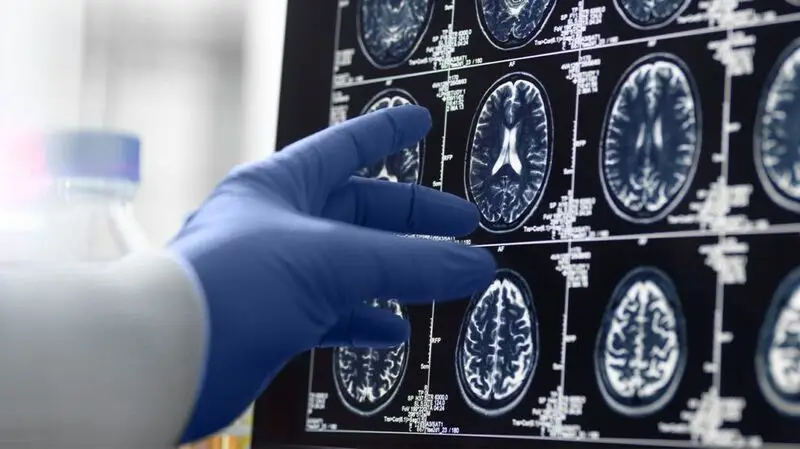
- Most individuals are currently diagnosed with Alzheimer’s disease only after cognitive decline has set in and brain damage has become irreversible.
- Alterations in brain metabolism and blood flow to the brain can be identified in the early stages of Alzheimer’s disease, before the onset of significant brain damage.
- A recent study identified specific patterns of alterations in brain metabolism and cerebral blood flow in brain regions affected by Alzheimer’s disease, which could allow for earlier diagnosis.
Researchers have shown that brain imaging scans assessing alterations in metabolic activity and local blood supply in specific brain regions could potentially allow early diagnosis of Alzheimer’s disease (AD) before irreversible damage occurs, according to a study published in
Current protocols for the diagnosis of Alzheimer’s disease involve cognitive tests and brain imaging techniques that detect abnormal aggregates of the amyloid beta (amyloid-β) protein.These diagnostic tests are typically conducted after the symptoms of the disease are apparent and irreversible brain damage has occurred.
The present study identified brain region- and sex-specific changes in brain metabolism and blood flow during the progression of Alzheimer’s disease, which may enable individualized treatment.
The study’s senior author, Paul Territo, PhD, Professor of Medicine at the Indiana University School of Medicine, noted to Medical News Today, “[Our study] could inform improved patient monitoring, stratification, and the development of targeted therapies aimed at early disease stages before irreversible damage can occur.”
Alzheimer’s disease is a progressive brain disorder involving a gradual worsening of symptoms over time. The abnormal accumulation of the amyloid-β and tau proteins is a hallmark of Alzheimer’s disease, and the detection of these proteins in the brain or blood samples has been used for diagnosis.
However, not all individuals with amyloid-β aggregates develop Alzheimer’s disease. Thus, there is a need for more specific markers that can help diagnose Alzheimer’s disease in the early stages.
Studies have demonstrated that alterations in brain metabolism and blood flow emerge in the early stages of AD before the amyloid-β aggregates reach detectable levels. While several studies have characterized these changes in brain metabolic activity and cerebral blood flow, there is a lack of data on the sequence of these changes and the pattern of changes exhibited by brain regions affected by them.
Neurons, the brain cells responsible for transmitting information in the form of electrical impulses, rely on glucose as their primary source of energy. Due to the lack of energy reserves, neurons rely on blood flow for glucose and oxygen.
Thus, in healthy humans, an increase in the activity of brain regions is accompanied by a corresponding increase in regional blood flow.
The present study characterized the combined patterns of disruption in brain metabolic activity and regional blood supply during different stages of Alzheimer’s disease, which could be used as a biomarker for this condition.
Studies have demonstrated a reduction in the
Aging is associated with cellular damage in the brain, leading to increased metabolic stress (oxidative stress) and inflammation. Inflammation in the brain and metabolic stress are considered to be responsible for alterations in cerebral blood flow and impaired glucose metabolism observed during Alzheimer’s progression.
The changes in the metabolism of neurons and the reduction in glucose and oxygen supply during the early stages of Alzheimer’s trigger a cascade of biological events, including compensatory processes. For instance, the decline in nutrient supply to brain cells leads to a compensatory increase in blood flow during the early stages of Alzheimer’s.
Similarly, the generation of new blood vessels from preexisting ones is observed during the later stages of Alzheimer’s progression in response to reduced cerebral blood flow and the development of amyloid beta aggregates.
The molecular changes associated with aging also lead to the activation and proliferation of glial cells, another major cell type in the brain. While a reduction in brain glucose metabolism is characteristic of Alzheimer’s disease, this decrease is preceded by a stage involving increased glucose metabolism.
Astrocytes, a type of glial cell, play a crucial role in supporting the function of neurons. They have stores of glycogen that can be broken down to provide energy for neurons, which may transiently contribute to increased metabolism.
The aging-related cellular damage also leads to the activation of a type of glial cell called microglia. Microglia are the brain’s immune cells and are involved in combating inflammation in Alzheimer’s.
However, the sustained activation of microglia in Alzheimer’s leads to their dysfunction. The dysfunction of microglia in early Alzheimer’s increases brain inflammation and disrupts the function of astrocytes and cells that form blood vessels that control blood flow.
The activation of interconnected metabolic, immune, neuronal, and vascular pathways in the brain in response to inflammation and metabolic stress leads to alterations in the metabolic activity of neurons and cerebral blood flow during Alzheimer’s progression.
As noted above, some of these changes are triggered to combat the disease-related changes. However, the progression of Alzheimer’s entails that these compensatory processes are unable to counteract the increase in inflammation and metabolic stress due to the disease.
In the present study, the researchers examined brain imaging data collected from 403 participants enrolled in the Alzheimer’s Disease Neuroimaging Initiative.
The researchers compared brain imaging data obtained from Healthy participants with that obtained from individuals with either early stage mild cognitive impairment (MCI), mild cognitive impairment, late-stage mild cognitive impairment, or Alzheimer’s disease. Mild cognitive impairment is a transition state between normal cognitive function and Alzheimer’s disease.
The researchers used brain imaging data from positron emission tomography (PET) scans, which measure the metabolic activity of brain regions, and arterial spin-labeled magnetic resonance imaging (MRI) scans, which assess changes in blood flow.
The 59 brain regions examined in each individual were categorized into one of four groups based on the combination of changes in brain metabolism and cerebral blood flow. These groups included:
- An increase in cerebral blood flow, but a decrease in brain metabolism
- A decrease in cerebral blood flow but an increase in brain metabolism
- An increase in both cerebral blood flow and brain metabolism
- A decrease in both cerebral blood flow and brain metabolism
How each brain region changed depending on Alzheimer’s stage
Each brain region exhibited distinct changes in brain metabolism and cerebral blood flow, depending on the stage of Alzheimer’s disease, and could be categorized accordingly into the aforementioned categories.
Brain regions involved in learning and memory were more likely to show dysregulation of brain metabolism and cerebral blood flow from the early stages of Alzheimer’s, such as early MCI or MCI. In contrast, other brain regions showed changes only during late MCI or after the Alzheimer’s diagnosis.
A majority, but not all, brain regions followed a specific trajectory of changes in metabolism and cerebral blood flow with the progression of Alzheimer’s.
These brain regions showed an increase in blood flow accompanied by a decrease in metabolic activity during early MCI. The same brain regions exhibited increased metabolism and a decline in blood flow in individuals with MCI. In other words, individuals with early MCI and MCI showed an uncoupling of brain metabolic activity and cerebral blood flow.
Based on previous studies, the researchers propose that the increase in blood flow during early MCI may serve as a compensatory mechanism to meet the brain’s energetic demands. During MCI, the increase in metabolism could be attributed to astrocyte activation, whereas the decrease in cerebral blood flow could be caused by brain inflammation.
There was a tendency for brain regions to show an increase in both blood flow and metabolism during late MCI. The changes in blood flow were likely due to the generation of new blood vessels to compensate for the decline in blood flow.
Lastly, these brain regions exhibited a decline in both cerebral blood flow and metabolism among individuals with Alzheimer’s disease. This could be attributed to the failure of compensatory mechanisms to cope with the changes in the brain due to Alzheimer’s progression.
Each brain region exhibited a distinct trajectory and varied in the magnitude and rate of change in metabolic activity and cerebral blood flow. In other words, some brain regions transitioned much more quickly from one stage to the next of metabolic activity and cerebral blood flow changes than others, or exhibited a significantly larger increase or decrease in metabolic activity and cerebral blood flow than others.
The biological processes underlying these changes in metabolism and cerebral blood flow during Alzheimer’s progression were also reflected in changes in gene expression patterns. The changes in gene expression patterns suggested an interplay between brain inflammation, metabolic stress, metabolic reprogramming, alterations in neurons, and changes in blood vessel function, leading to the observed changes during Alzheimer’s progression.
These findings reveal a distinct trajectory of changes in metabolic activity and cerebral blood flow that was specific for each brain region and the stage of Alzheimer’s progression. These patterns, particularly the uncoupling of metabolic activity and cerebral blood flow in brain regions involved in learning and memory, could be utilized for the early diagnosis of Alzheimer’s.
Jurgen Claassen, MD, Associate Professor at Radboud University, Nijmegen Medical Centre, who was not involved in the study, said, this study suggests that early disease processes occur before the typical markers of Alzheimer’s start becoming apparent.
“This study points towards disease mechanisms in Alzheimer’s disease that are active before the onset of the classic amyloid and tau pathology. This may help us to explain why immunotherapy to remove amyloid-β is unable to prevent disease progression, because it does not tackle these disease mechanisms that precede the accumulation of amyloid-β.”
— Jurgen Claassen, MD
The researchers, however, noted that further research is necessary before these findings can be applied in the clinic. The findings are based on a single dataset and require validation in independent datasets to assess their sensitivity. Moreover, long-term studies are needed to assess whether these findings can be used to accurately predict the development of Alzheimer’s.
Additionally, the study included individuals over the age of 55. Thus, the dataset may have missed information from younger individuals in the very early stages of Alzheimer’s.
Furthermore, clinical assessments were used to distinguish the stages of Alzheimer’s, and these assessments may lack precision in distinguishing individuals who might show cognitive deficits close to the cutoff points between Alzheimer’s stages.
Echoing these limitations, Claassen recommended taking a cautious approach while considering the diagnostic potential of these findings.
“The ADNI dataset is often assumed to contain participants that are representative of all of Alzheimer’s disease, but this is, of course, not true. The highest priority will be to replicate these findings in a new dataset,” he said.





